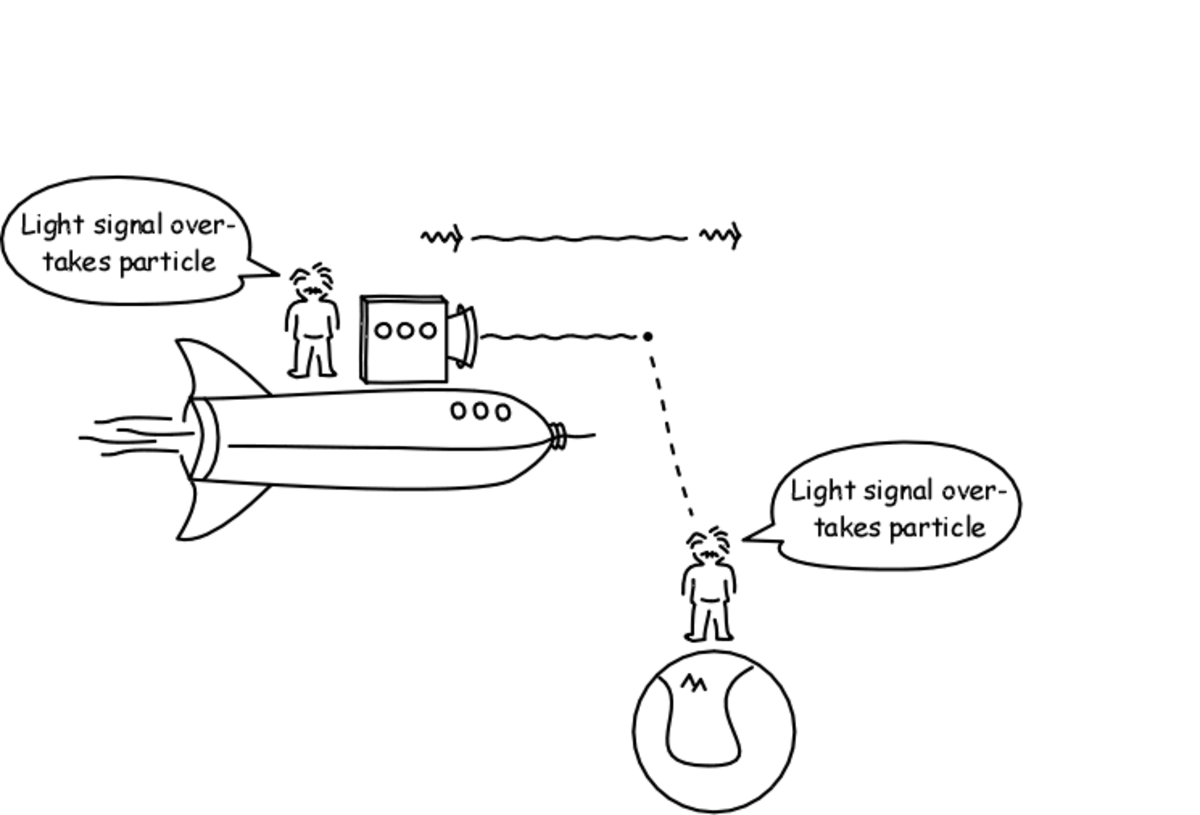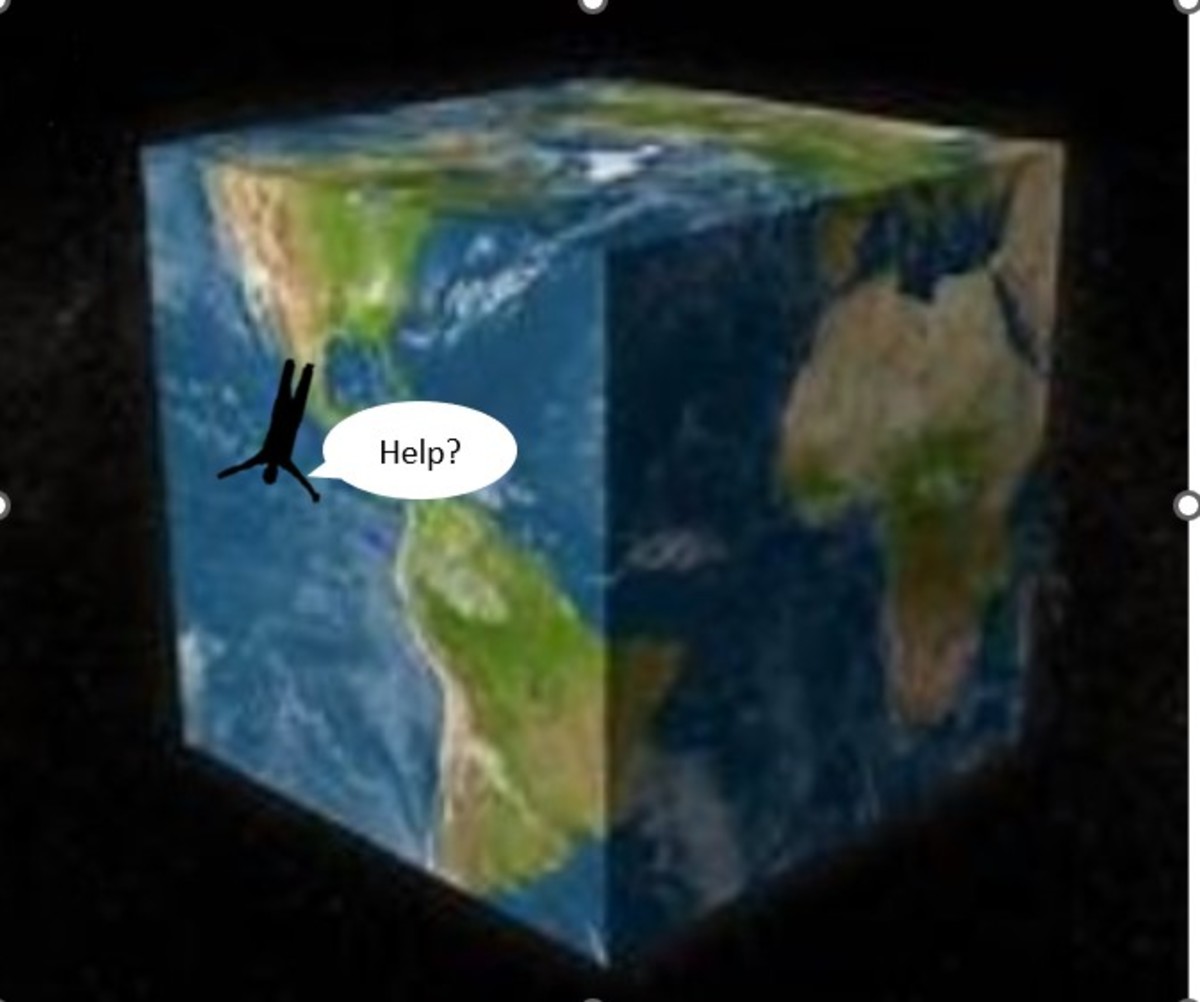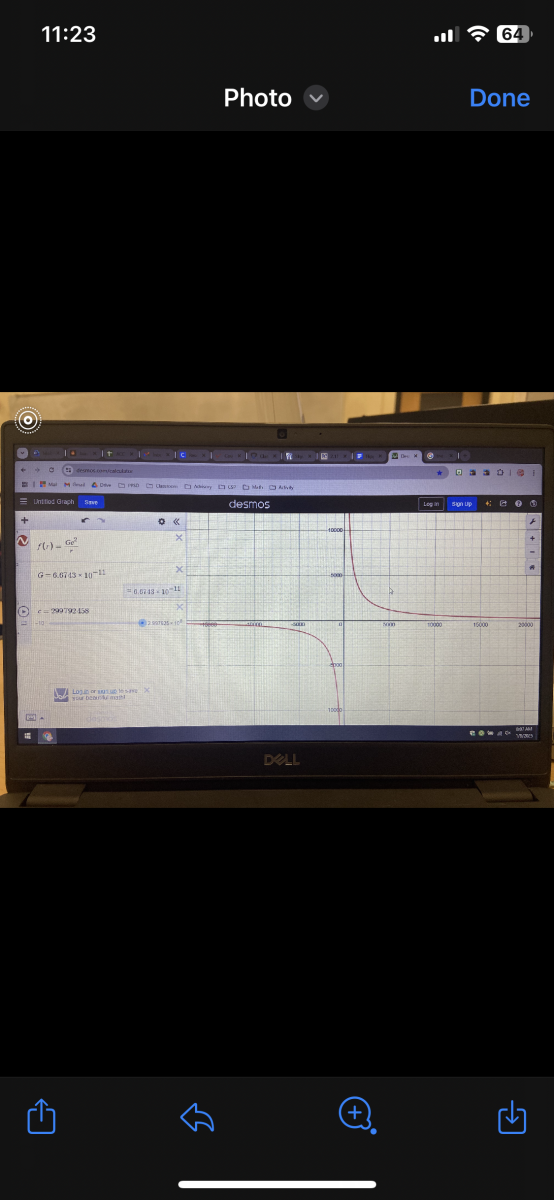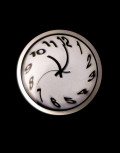The Lorentz Contraction, or, How Motion Affects Space (Part 2)
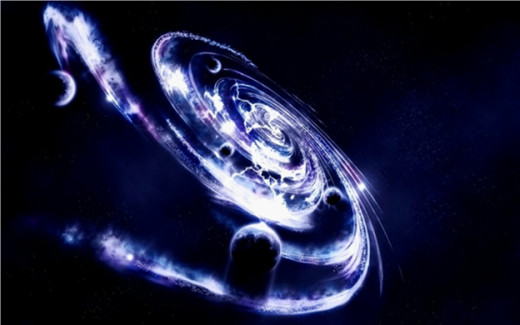
In Part 1, we compared, from a purely mathematical perspective, the predicted amounts of time that it would take Scotty's Clocks V and H to complete their respective ticks, as calculated from our point of view standing at the train crossing. This comparison has certainly given us a lot to digest (…*burp*…oh, ah, pardon me, er, excuse me…), or maybe even given us indigestion itself (…*barf !*…sorry about the nice wool sweater…). So, to give our innards a bit of relief, we summarize our previous reasoning as follows:
Thought Experiment #2 – A Quick Recap
1) Scotty’s train moved through the crossing at the constant speed v relative to us. We used some high school algebra to calculate how much time it would take the photons in each of his clocks V (positioned vertically) and H (positioned horizontally, along the direction of relative motion, and directly beside Clock V) to complete their respective ticks, as observed from our point of view. What, then, did we discover about the relationship between these respective amounts of time, namely, tV and tH, and what did this discovery lead us to predict would happen?
2) From our point of view, that is, as measured by us using our watches, we have calculated that:

where h is the distance between the reflective surfaces of the mirrors, v is the relative speed of Scotty’s train, and c is the speed of light.
3) tV's and tH's numerators are the same, that is, they both equal 2h / c.
4) However, we have shown that tH's denominator, which is equal to 1 - v2 / c2, is always less than tV's denominator, which is equal to sqrt(1 - v2 / c2).
5) Thus, by the basic mathematical properties of the operation of division, the amount of time tH must always be greater than the amount of time tV, because a lesser denominator means a greater quotient. Hence, the relationship tH > tV must always be true.
6) And this relationship led us to predict that, from our point of view, we would observe Clock H ticking at a slower rate than Clock V! So, as a direct consequence of our prediction, we would observe that Clock H falls out of its original synchronization with Clock V!
Having gotten this far, what, then, can we quickly ascertain about the ‘behaviour’ of Scotty’s photon Clocks V and H, as observed from our point of view standing at the train crossing? Well, from our first thought experiment on time dilation, we know that the motion of Scotty’s train relative to us causes Clock V’s photon to travel its double diagonal path to complete 1 tick. And to make a long story short, this results in Clock V – and time itself aboard Scotty’s train – ticking by at a rate that is

times slower than the normal rate of time passage that our clocks are ticking at. However, we have just finished predicting, as a result of our very recent calculations, that this very same relative motion will cause Clock H’s photon to travel its long left to right but short right to left paths to complete 1 tick, which will result in Clock H ticking even more slowly than Clock V! Hence, if the slowly ticking Clock V is in sync with the rate of TIME PASSAGE ITSELF ABOARD SCOTTY’S TRAIN, then WHAT is the even more slowly ticking Clock H in sync with, HUH??

Thought Experiment #2 – Sync Or Sink
“So what? What does any of this horse manure have to do with length contraction? This sounds more like some cheap, second-rate, plagiaristic rehash of the time dilation phenomenon, for the love of fartology…”. Okay, let’s grab a couple of sodas from the coolerator and chill, because we are finally getting to the crux of the matter. Once more, we must put ourselves into Scotty’s shoes, and take a look at things from his perspective. Hence, we recall that before boarding the train, he synchronized Clock V and Clock H, so that both photon clocks were ticking with the same cadence. He then brought the clocks on board the train with him and situated them so that they were both side by side in the vertical position, as depicted in Figure 1.1. And then, with the train moving smoothly in a straight line and at a constant relative speed v, that is, with the train in uniform motion – Whoa! Hold on a second… Since we are looking at things from Scotty’s point of view, our previous sentence should actually read, “And then, with the outside world moving smoothly in a straight line and at a constant relative speed v, that is, with the outside world in uniform motion” (now continuing on with the rest of the sentence), and with both of his photon clocks happily ticking in sync, Scotty next re-positioned Clock H so that it was still directly beside Clock V, but was now lying horizontally on the passenger car’s floor, such that its photon was now bouncing forward and backward between its mirrors, namely, bouncing along the same line as the outside world’s motion. This is depicted in Figure 1.2. To recap, then, Scotty’s Clock V remained in its vertical position, while his Clock H, although still directly beside Clock V, was now in a horizontal position along the direction of motion of the outside world.
THUS, expressing our previous query a little differently (but in an equivalent way) this time, the humungous conundrum is this: It was argued, near the very beginning of our detailed and systematic ‘mathematical comparison’ of tV vs. tH, that because of special relativity’s first and second postulates, Clock V and Clock H will always remain in sync, as observed from Scotty’s point of view. However, as observed from our point of view, it seems, as a direct result of our mathematical calculations, that (the horizontally re-positioned) Clock H will slow down and fall out of sync with Clock V as we watch Scotty’s train rumbling through the crossing! HENCE, we must ask ourselves: Will Scotty now also observe his Clock H slow down and therefore fall out of sync with his Clock V as a direct consequence of re-positioning Clock H, as we have just predicted? “YES, he will”, or, “NO, he won’t”? There is only THE answer!
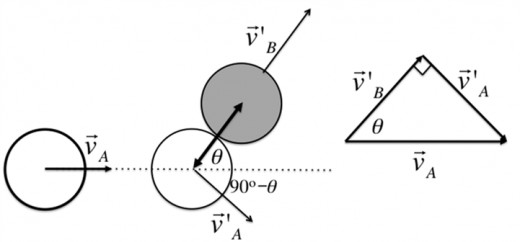
Thought Experiment #2 – The First Fundamental Postulate, Revisited
Just before we reason out the answer, let’s quickly remind ourselves of special relativity’s first fundamental postulate, which, as we know, is also called the principle of relativity, because it plays a crucial role in all of this hoopla. Simply put, it states that: There is absolutely no experiment that one can perform, in the whole of physics, that will detect or reveal a state of uniform motion, namely, a state of motion in a smooth, straight line and at a constant, or unchanging (relative) speed. Using less technical jargon, one cannot ‘feel’ uniform motion. In fact, one can consider oneself to be at rest while the ‘outside world’ is in motion instead. And why is this so? Because absolutely all of the laws of physics behave in exactly the same manner for those in a state of uniform motion as they do for those in a state of rest. Mother Nature does not conduct herself differently depending on one’s state of uniform motion or one’s state of rest. By the laws of physics, then, the two situations are equivalent, and therefore, by these same laws of physics, the two situations are indistinguishable. Hence, with regard to relative uniform motion, no one, and that means absolutely no one, can ever prove or say that, “Yes, I am the one who is truly in motion!”

Thought Experiment #2 – The Revenge Of The First Fundamental Postulate
Now, because of special relativity’s first postulate, then just as in our first thought experiment about the time dilation phenomenon, Scotty has every right to assume that he and his train are the ones at rest, and it is in fact we, the train crossing, and the rest of the outside world that are moving past him at the constant relative speed v instead. And therefore, from Scotty’s point of view, a simple re-positioning of his Clock H should not cause it to slow down and fall out of sync with his Clock V whatsoever, as we have boldly predicted it should do! And why not? Well, because to Scotty, he is the one at rest, and hence, if Scotty were to observe his Clock H to suddenly, and for no apparent reason at all, slow down its ticking and fall out of sync with his Clock V as a result of it merely being moved from one position to another, then Scotty would be able to use this very result to deduce that he was definitely the one in motion! Hence, with one quick move of a clock, Scotty would end up utterly and totally destroying the first postulate, that is, the principle of relativity, which is, as we know by now, one of the foundational laws that govern the workings of the universe itself!
Our comprehension of this idea will be much enhanced if we try to clarify things a little further, because we are dealing with a deeply fundamental yet much understated concept that underlies all of reality. As the first postulate asserts (and as we revisited just a few paragraphs ago), there is absolutely no physical experiment that Scotty can perform aboard his train, in the whole of physics, that will detect or reveal whether his train is in a state of uniform motion. Let’s keep this fact first and foremost in our minds. For instance, Scotty can toss a baseball inside his cabin and work out its trajectory, throw a paper airplane from one end of his cabin to the other and analyze its aerodynamic properties, play a game of pool with the Maitre d’ and calculate the paths that the billiard balls will take after they hit one another, wash his hands in the cabin’s restroom and determine the changes in water pressure as it is forced through the network of connected pipes, put up his Christmas tree and measure the electric current that is drawn by its string of coloured light bulbs, utilize his portable EEG unit and measure his brainwave activity to ensure that he is not going insane, or perhaps, just take his pet dog Mooklamax for a short, leisurely walk inside his passenger cabin and measure the amount of tension in the leash. In essence, then, Scotty can basically do… anything!! And the subsequent results – as observed from his point of view, that is, as measured by him – of any and all experiments that he performs on his relatively moving train, would be completely identical to the results he would measure, had he performed these very same experiments on the relatively motionless train station platform instead (provided, of course, that all of the initial conditions and parameters, again, as measured by him, such as throwing angles and forces, applied water pressures, electrical voltages, and so forth, were likewise completely identical).
Hence, saying it once more, no experiment can detect or reveal a state of uniform motion. And the scope of what defines an experiment must therefore also include the moving or re-positioning of any and all types of clocks – from wristwatches and tuning forks to atomic clocks and photon clocks. Thus, we can consider Scotty’s re-positioning of his photon Clock H, from its original vertical position to its new horizontal position, to be a valid physics experiment in and of itself, albeit a very lame one (we’re sure he’d rather get some exercise and walk Mookie instead). But as lame as it is, this sad excuse for an experiment must still, of course, obey the first postulate, that is, its result CANNOT “tip Scotty off” in any way whatsoever as to whether he is in uniform motion.

Thought Experiment #2 – THE Answer To Our Question
We, on the other hand, have calculated and established from the outset that, from our point of view, the relationship tH > tV is indeed a direct result of the fact that Scotty re-positioned his Clock H from the vertical to the horizontal position, combined with the fact that Scotty’s train is moving in the horizontal direction relative to us. And this relationship led us to predict that Clock H’s ticking should slow down, and that there should be a resultant failure in the synchronization between Scotty’s Clocks H and V. It only takes the failure of one experiment, no matter how infinitely lame, to completely demolish even the grandest of physics theories, and special relativity is not exempt. Because now, if Scotty, as we have predicted, were to indeed observe his Clock H suddenly slow down and fall out of synchronization with his Clock V as a direct result of his “Re-positioning of My Clock H Experiment”, then he could use this same ‘failure in synchronization result’ to “tip him off” as to his train’s motion. And he would likewise deduce and immediately proclaim, being a very astute but loud-mouthed engineer, that, “Yes, my train, and not the outside world, is the one that is truly moving in the horizontal direction, because my Clock H slowed down its ticking and consequently fell out of sync with my Clock V!”. And in doing so, Scotty would torpedo the principle of relativity and sink it into oblivion!
And so, we have to take some valium to once again seriously calm down and collect our thoughts, because the first postulate cannot tolerate even the slightest of contradictions, as it has proven (thus far!) to be one of the fundamental principles upon which the Supreme Reasoner based the universe’s design! Hence, if we again ask ourselves: Will Scotty observe his Clock H slow down and thus fall out of sync with his Clock V as a direct result of it being re-positioned, as we have predicted it should do? Then, after our careful re-examination of the principle of relativity, our answer can only be: “NO, he won’t. Scotty will NOT observe his Clock H slow down even one iota, and therefore, he will continue to observe his Clock V and his Clock H ticking in sync with each other even after Clock H’s re-positioning, as if nothing had happened at all”. And why must this be so? It must be so, because there is absolutely no experiment that Scotty can carry out – in fact, there is absolutely NO SINGLE ACTION that Scotty can perform, that will detect or reveal whether he is in uniform motion – period. And hence, since the clocks CANNOT be BOTH in sync AND out of sync, then from our vantage point standing at the train crossing, we must therefore also observe that Clock H and Clock V remain in sync, regardless of any re-positioning – period. [5]

Thought Experiment #2 – Something Still Seems Amiss Around Here…
This conclusion, however, just seems to create another logical absurdity, and here’s the reason why: We have just asserted assertively that Clock H and Clock V must remain in sync from Scotty’s point of view (and therefore, from our point of view also), so as not to pulverize and destroy the principle of relativity – period. And yet, we have painstakingly, and without error, used a good portion of our discussion thus far to calculate and prove that as observed and measured from our point of view, tH, which is the amount of time that it takes Clock H to complete 1 tick, will always be greater than tV, which is the amount of time that it takes Clock V to complete 1 tick! Hence, it appears that from our perspective, we have no alternative but to observe that Clock H will still slow down and tick more slowly than Clock V as we watch Scotty’s train motor through the crossing, and will thus still fall out of sync with Clock V!
How is it possible for Scotty to observe that both clocks continue to tick in sync, while we calculate that these same clocks should fall out of sync?? What the hell kind of circus is this?? Where are the dancing bears?? Is the principle of relativity nothing more than physics folly?? Can these two apparently irreconcilable facts be reconciled!? Nonetheless, let’s follow Einstein’s successful endeavor to do so, for the sake of our imploding heads. Can anyone of us use a few capsules of Quadruple Extra Maximum Strength Tylenol right about now?
Thought Experiment #2 – Special Relativity’s Cookie Recipe: Lots Of Chocolate, And Add Some “Shortening”
“Whoa! Stop right there, you good for nothing sad sack! You’re way out of line this time, so jam it, pizza face! We just spent five full pages, using all of that highbrow math, proving that Clock H must indeed fall out of sync with Clock V! But now, it doesn’t!? What in the name of the fact that you suck is going on here, jerk!?” To answer, we can rest assured in knowing that there is nothing wrong with our reasoning or our mathematics. The equations that we have obtained – which were derived from our point of view – for both the amounts of time tV and tH are indeed quite correct, because we effectively applied the rules of only the most basic algebra and geometry. Hence, we are certainly mathematically correct in concluding that tH > tV, which further leads to the inference that from our point of view, Clock H must therefore fall out of its original synchronization with Clock V.
Stating things in an equivalent way, our result that tH > tV can only mean one thing, as observed from our perspective. It can only mean that Clock H’s photon must travel a longer total distance to complete 1 tick than Clock V’s photon must travel to complete 1 tick, BECAUSE of the fact that both photons must always move at the same unchanging speed of light c (that is, because of special relativity’s second postulate)! And to illustrate this ‘equivalent way’ of looking at things, we first remember one of the three basic relationships between speed, distance, and time:
DISTANCE TRAVELED = SPEED OF TRAVEL x TRAVEL TIME
Next, we let dV equal the total distance that Clock V’s photon must travel to complete 1 tick, and we let dH equal the total distance that Clock H’s photon must travel to complete 1 tick, with both distances being, of course, observed from our point of view, that is, measured by us using our rulers. Therefore, by this basic relationship for the quantity ‘distance traveled’, the distances dV and dH must be given by the simple equations: dV = c x tV, and dH = c x tH, where c is the constant, unchanging speed of light, and tV and tH are, once again, the travel times for each photon to complete their respective ticks, as observed from our point of view, that is, as measured by us using our watches. And since tH > tV, then it immediately follows from these simple equations that dH > dV also, because both photons must always move at the same, unchanging speed of light c! Therefore, Clock H’s photon must travel a longer total distance to complete 1 tick than Clock V’s photon must travel to complete 1 tick, as observed from our point of view, which leads to the inference that from our perspective, Clock H must fall out of its original synchronization with Clock V.
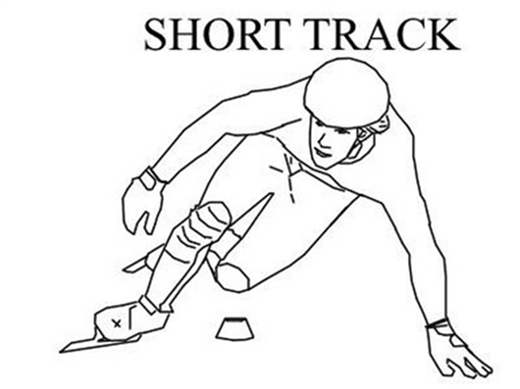
BUT, as we have just discovered, on the other hand, reality itself demands that Clock H must remain in sync with Clock V! And Clock H remaining in sync with Clock V necessitates the fact that, contrary to our calculated results, Clock H’s and Clock V’s photons must both travel equal distances in completing their respective ticks, that is to say, dH = dV , and not dH > dV, must instead be true as observed from our point of view! Hence, we have no choice but to conclude that somehow, by some means, tH = tV instead of tH > tV as observed and measured from our perspective, so that dH = dV can be made a reality, thereby keeping Clock H and Clock V in sync with each other! But how can this possibly be achieved, as observed from our perspective? Well, here is Einstein’s solution: For tH to become equal to tV, the total distance that Clock H’s photon has to travel to complete 1 tick must therefore contract, or shorten, as observed from our point of view, such that it becomes equal to the total distance that Clock V’s photon has to travel to complete 1 tick! That is to say, the total distance, dH, of the forward and backward path that we observe Clock H’s photon to travel to complete 1 tick must decrease in length so that it becomes equal to the total distance, dV, of the double diagonal path that we observe Clock V’s photon to travel to complete 1 tick! And consequently – okay, let’s get ready for this doozy – the only way that this equality in path lengths can be achieved is if:
AS OBSERVED FROM OUR POINT OF VIEW STANDING AT THE TRAIN CROSSING, the distance between the reflective surfaces of Clock H’s mirrors (and moreover, the full length of Clock H ITSELF) shrinks or contracts so that it becomes shorter than its original (i.e., its normal) value of h!
Alrighty, then. Let’s see just how the mechanics of this newly introduced distance shortening phenomenon, formally known as the Lorentz Contraction, can keep Clock H in sync with Clock V, and therefore remedy the universe around here…

Thought Experiment #2 – The Fix Is On!
Okay, here’s where things get a bit tricky, so let’s stay sharp! Now, we have already calculated that the travel times that the photons (in Clock H and in Clock V) need to complete their respective single ticks, namely, the travel times tH and tV – which are both observed from our point of view, that is to say, which are both measured by us using our watches – are given by their respective equations

For the intention of complete clarity in our following explanation, the equation for tH can be easily re-written into the following form:

where h is, of course, the normal distance between the reflective surfaces of the mirrors, as shown in Figure 1.2 (and also in Figure 1.1).

And at this point in our discussion, we carefully note that for the sole purpose of simplicity, we will assume the thickness of the mirrors themselves to be extremely minuscule and therefore negligible. Hence, this will make the normal distance h between the reflective surfaces of the mirrors effectively equal to the full (normal) length of the Photon Clock H itself.
So, as we have just discovered, if the value of h decreases, that is, if the length of Clock H shortens as observed from our point of view (by an amount, or factor, which is yet to be determined), then the relationship that tH = tV can be made a reality, thus keeping Clock H in sync with Clock V and therefore upholding the highly regarded principle of relativity.
Okay, then let’s shorten the normal length (as observed from our point of view) of Clock H, which is equal to h, by multiplying it with an already all too familiar quantity, namely, the quantity

and see where this leads us! We remind ourselves that v is the speed at which Scotty’s train, and hence, his clocks, are moving relative to us. “But how will h be ‘shortened’ by multiplying it with the quantity sqrt(1 - v2 / c2) ?", we wonder. Well, we recall that we have already shown that this quantity, sqrt(1 - v2 / c2), is always LESS than 1. And therefore, if we define a new quantity to be equal to

then this new quantity must clearly always be LESS than h.
“Okay, that’s the last straw! What can possibly result from all of this pointless, haphazard, face planting into walls in the dark guesswork, you lousy punk? Is it because you feel lucky?... Well do ya, PUNK!!??”. Easy, Detective Maclanahan – the valium is in the medicine cabinet.
We can therefore think of this new quantity, h x sqrt(1 - v2 / c2), as being a CONTRACTED, or SHORTENED length of the Photon Clock H ITSELF as observed from our point of view, with this shortening in length occurring ALONG THE DIRECTION OF RELATIVE MOTION. We will call this length hC, where “C” stands for “contracted”. This is shown by Figure 1.3.
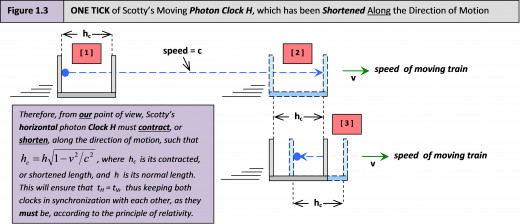
And hence, this new, shortened length is given by the equation

So, if we now substitute this shortened length, hC, so that it replaces Clock H’s normal length, h, in our original equation for tH (which we re-wrote into the form above), we get the following:
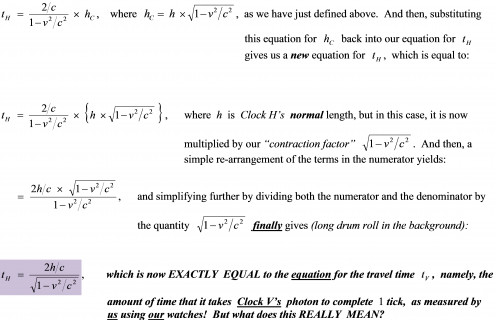
This means that: IF, AS OBSERVED FROM OUR POINT OF VIEW, Clock H ITSELF, which is moving at the speed v relative to US, SHORTENS by a factor of sqrt(1 - v2 / c2) ALONG THE DIRECTION OF RELATIVE MOTION, THEN the time tH, which is the amount of time, as measured by us using our watches, that it takes Clock H’s photon to complete 1 tick, will DECREASE so that tH = tV ! Hence, this SHORTENING OF THE LENGTH OF CLOCK H will keep it IN SYNC with Clock V, as it MUST be, according to special relativity’s FIRST FUNDAMENTAL POSTULATE, otherwise known as the PRICIPLE OF RELATIVITY!
Stating things in an EQUIVALENT way, this means that: IF, AS OBSERVED FROM OUR POINT OF VIEW, Clock H ITSELF, which is moving at the speed v relative to US, SHORTENS by a factor of sqrt(1 - v2 / c2) ALONG THE DIRECTION OF RELATIVE MOTION, THEN the forward and backward path that we observe Clock H’s photon to travel to complete 1 tick will DECREASE IN TOTAL DISTANCE so that it becomes EQUAL to the TOTAL DISTANCE of the double diagonal path that we observe Clock V’s photon to travel to complete 1 tick! And since BOTH photons must ALWAYS move at the SAME, UNCHANGING speed of light c, then the travel time tH , as measured by us using our watches, will ALSO DECREASE so that tH = tV ! Hence, this SHORTENING OF THE LENGTH OF CLOCK H will keep it IN SYNC with Clock V, as it MUST be, according to special relativity’s FIRST FUNDAMENTAL POSTULATE, otherwise known as the PRICIPLE OF RELATIVITY!
Notes:
[5] Yes, Clock V and Clock H must remain in sync due to special relativity’s first postulate (i.e., the principle of relativity), but both clocks must also be ticking at a rate that is slower than the normal rate of time passage by a factor of

(as observed from our point of view), due to the time dilation phenomenon.
Continue To Part 3
- The Lorentz Contraction, or, How Motion Affects Space (Part 3)
The 2nd in a series of articles on Albert Einstein's Special Theory of Relativity
Go Back To Part 1
- The Lorentz Contraction, or, How Motion Affects Space (Part 1)
The 2nd in a series of articles on Albert Einstein’s Special Theory of Relativity



